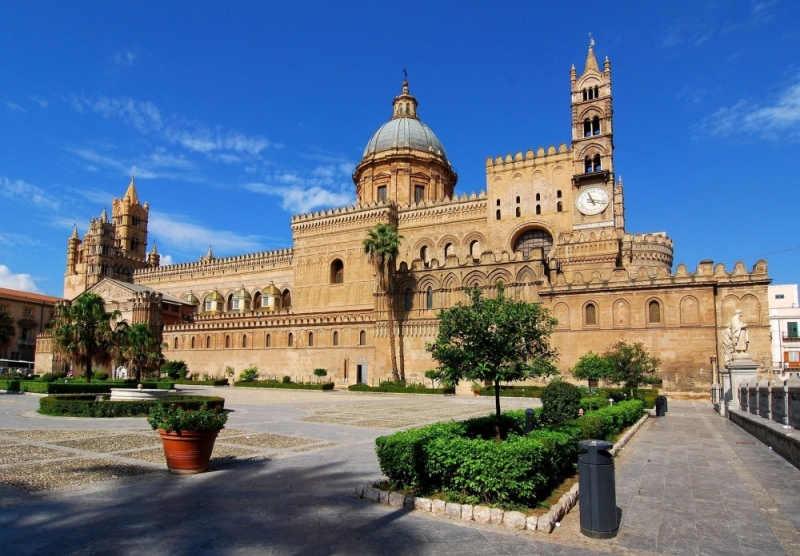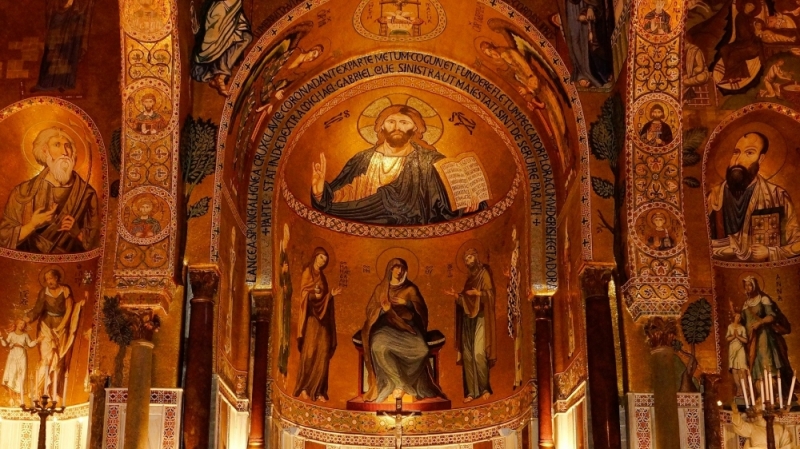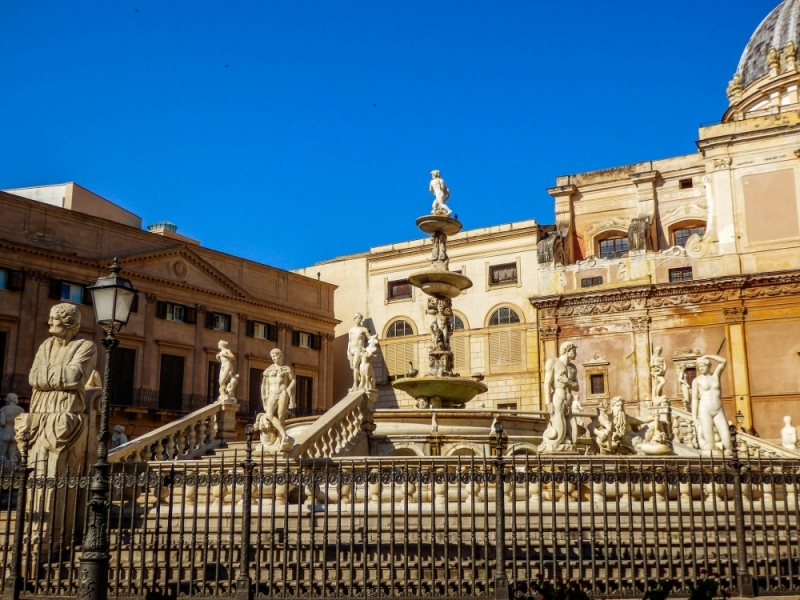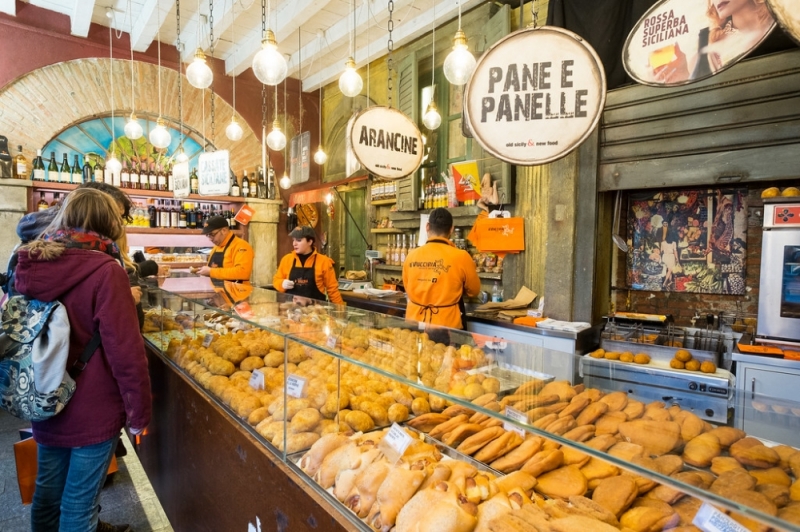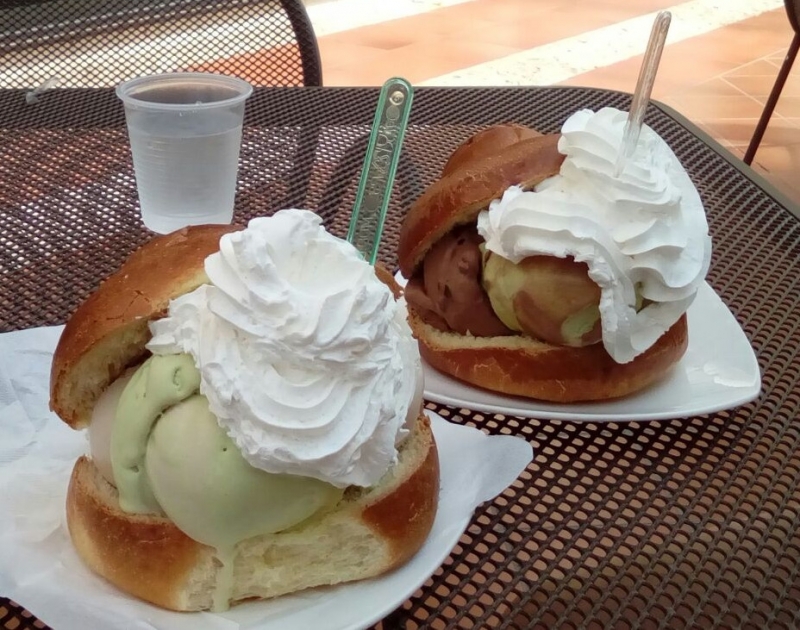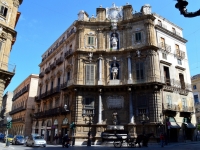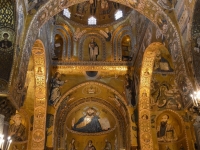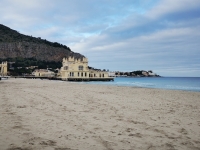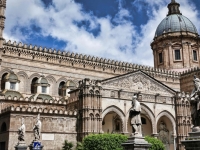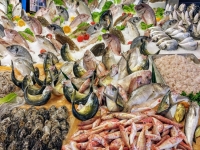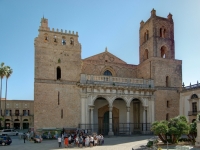Palermo and its origins
Palermo , the capital of Sicily, is a city that has acquired prestige over the course of history, having been the center of a fusion of cultures, such as the Greek-Byzantine, Arab and Latin ones. Goethe was fascinated by it, to the point of calling it "the land where lemons bloom". The beauties of Palermo, despite the damage caused by the Second World War, still attract tourists from all over the world today. Palermo was founded by the Phoenicians, who called it "Ziz" which in their language means flower. Later the Greeks called it “Pànormos”, which in Greek means "all port". At the head of the city there was, for a short time, Pyrrhus, king of Epirus, who lived until the conquest of the Romans (which occurred during the First Punic War). Three years later, first Hasdrubale and then his father attempted to conquer it, but without obtaining any success. The years of Roman domination were years of flourishing for Palermo, until, in 535, it was conquered by the Byzantine general Belisarius and, during the Byzantine domination, it experienced a dark period. The city was ruled by the Byzantines until 831, when the Muslims advanced. Palermo became the main military center of the Arabs. Under Arab rule, Palermo was among the most prestigious cities in the Muslim world and its works of art were described and honored by writers from all over the world. The flowering period under Arab rule lasted until 1072, when Palermo was conquered by the Normans. The goal of the Normans was to give the city a Christian feel by dismantling the Arab buildings. However, the sovereigns also proved to be tolerant, allowing the peaceful coexistence of the Arab, Greek-Byzantine and Latin populations, respecting any culture. Having become the capital of the kingdom in 1130, it was known for the trade of fabrics and fabrics, especially those woven by the Arabs, in demand throughout Europe. The Norman dynasty ended with the death of William II. He was succeeded by Frederick II of Swabia, who made the city one of the major cultural centers in Europe. It was precisely at his court that the well-known Sicilian poetic school in the vernacular was born. When Palermo came under the dominion of the Angevins, the cultural center became Naples. This decision led to the revolt of the Sicilian Vespers, which ended with the peace of Caltabelotta in 1302, where the Anjou were expelled and Pietro III of Aragon received the crown, who claimed the rights of the Swabian dynasty. In 1412, Sicily was annexed to the crown of Aragon by order of Ferdinand I and Palermo lost its economic prestige, although it remained the bureaucratic and administrative seat of the island. This led to a revolt, which exploded in 1647, led by Giuseppe d'Alessi. After the Savoy and Austrian domination, the Bourbons acquired power. The Bourbon court was welcomed with pleasure, until the suppression of the constitution granted to Sicily four years earlier made Palermo a provincial city. This event aroused anti-Bourbon sentiment in the population and led to violent revolts in 1820 and 1848. Starting from the movement led by Rosolino Pilo, a series of rebellions followed, which led to the Expedition of the Thousand: initially the Bourbons were defeated in Calatafimi , then Garibaldi continued towards Palermo defeating the Bourbon army. Following the annexation to the kingdom of Italy, the pro-Bourbons and the autonomists organized another revolt, which forced the authorities to lock themselves in the buildings, allowing the rebels to take over the city. The Second World War brought numerous damages and, only in the 1980s, the rehabilitation work began. To date, tourism is an important sector of the economy.
What see:
Palermo is a city rich in monuments and works of art, until it was declared a UNESCO World Heritage Site in 2015. There are numerous wonders of the Arab-Norman city:
Palermo Cathedral
The cathedral of Palermo tells the millennial history of the city. It was a basilica under Christian domination, became a mosque under Arab rule and then returned as a church under the rule of the Normans. It was Ferdinando Fuga who gave it a neo-classical imprint, although it is still possible to admire Arab-Norman, Gothic and Baroque traces in the main apse. Chiesa della Martorana was built on the orders of Admiral Giorgio d'Antiochia is one of the most fascinating Byzantine churches in Italy, surprising for the contrast between the Arab-Norman style. Among the decorations, the most surprising is that of the "Christ Pantocrator", at the top of the dome.
Palazzo dei Normanni and the Palatine Chapel
Palazzo dei Normanni is the oldest residence in Europe. Here is the Palatine Chapel which was built in 1130 by order of Roger II of Sicily. The Byzantine mosaics, among which the "Christ Pantocrator", also present in the Martorana Church, capture the attention. The Catacombs of the Capuchins are defined as the place where "the living meet the dead". This is precisely the reason why the friars used to mummify the dead: to give the relatives of the dead the chance to meet their loved ones. The Capuchins mummified the dead until the early 1900s, with the exception of Rosalia Lombardo, defined as "the mummy of Palermo".
Palazzo Abatellis regional gallery
Fortified citadel of Kalsa and Palazzo Abatellis : visiting the Kalsa means reliving the history of a place that has long represented Palermo's politics, finance and culture. There is so much to see, including Palazzo Mirto, Palazzo Abatellis and the Oratorio dei Bianchi. Palazzo Mirto has long been the home of the Norman Filangieri family. Palazzo Abatellis is a museum full of medieval works, accumulated especially during the nineteenth century. Finally, we have the Oratorio dei Bianchi, home of the Noble, Primary and Real Company of the Holy Crucifix, where it is possible to admire the "door of victory". The Pretoria Fountain is located in the center of the square of the same name and is called "fountain of shame" by the Palermo because of the nudity of its statues. It was destined to embellish the garden of Don Luigi di Toledo in Florence, but was then sold to the Senate of Palermo in order to pay off some debts.
Cathedral of Monreale
The Cathedral of Santa Maria Nota, better known as the C cathedral of Monreale , is also a UNESCO heritage site since 2015. The Byzantine mosaics show traces of the Normans, while the portico reveals a Baroque style. The whole contrasts the high altar and the organ, the first dating back to the 1700s and the second to the 1900s. According to legend, it was the Madonna who wanted the construction of the Cathedral, revealing herself in a dream to a Norman leader. Not to be missed are the typical markets of Palermo , where you can also see the influence of the long Arab tradition. You can find both typical dishes and stalls selling dishes from other cultures.
Movida and entertainment
If you want an aperitif, you should know that in Palermo also the aperitif is accompanied by typical products and it is possible to eat and drink at low cost. In Piazza Caracciolo, near the Vucciria market and in the middle of the social life of the city, you can taste typical products such as bread and panelle, stigghiola, pani ca 'meusa and much more. Afterwards, you can head to a wine shop like "Taverna Azzurra", which has kept the same style of the 70s, and enjoy a glass of wine. If you prefer a quieter place, there is the Premiata Enoteca Butticè, in Piazza San Francesco di Paola 12. If you are visiting in July, do not miss the Feast of Santa Rosalia which is celebrated on the night between 14 and 15 July. Instead, if you are in the city in mid-December, don't miss the Palermo Streetfood Fest, a festival that will allow you to delight your palate. For music lovers, in Palermo there are numerous concerts or even events that host well-known singers. Among the places to try there is the Gatto Nero Jazz, in via Rua Formaggi n ° 15. If you want to listen to different genres, you can go to "I Candelai", in via dei Candelai n ° 65. There are several discos in the Sicilian capital, but one to be mentioned is certainly the Samanà club, one of the largest in southern Italy. If you want to try new activities there is the social center "Ex Karcere", just keep up to date on the facebook page to know the events scheduled.
Are you looking for a gastronomic tour? Be aware that Palermo is the Italian capital of street food. In fact, in mid-December, don't miss the Palermo Streetfood Fest, a festival that will allow you to delight your palate. You will find beyond the arancina (be careful not to miss it!), The sandwich with the spleen, the sfincione and many others, which testify to the history of the city and the fusion of different ethnic groups. There is also something for lovers of sweets, in fact, cannoli, cassata, almond pastries or the watermelon frost are part of the Palermo cuisine. Absolutely not to miss the Palermitan breakfast : hot Brioche and granita or hot Brioche with ice cream and cream !! For sea lovers: don't miss the beach in Mondello with its white sand and crystal clear water ... and the many places to eat excellent fish, even street food with an unmissable octopus boiled by "Callogero". Also for sea lovers, from Palermo you can reach in about 50 minutes by ferry the beautiful island of Ustica, nicknamed "the island of the divers ", perfect, therefore, for divers, but also suitable for families.
Climate, curiosity and advice
Climate: In Palermo the climate is Mediterranean, with mild and rainy winters and hot and sunny summers. Due to the sirocco the city can reach peaks of 20 ° in winter and 40 ° in summer.
Curiosity: Regarding the interesting anecdotes to know, in Palermo there is a well-known figure called the Count of Cagliostro: we don't know what it was, we only know that he was condemned by the church for heresy. It is certainly an integral part of the Palermo popular cult. In the Ballarò district, a mural was also dedicated to this mysterious figure. As mentioned previously, Palermo has been the site of numerous historical riots. Two men who led the revolt, Gaspare Bivona and Filippo Patti, hid in this crypt to escape the royal troops. It was thanks to "two wives", or two women, that the two managed to escape. In Palermo there is the famous "genius of Palermo", is a supernatural entity believed to be the protector of the city. It is a symbol to which the people of Palermo are very close, as much as Rosalia.
Tips: If you arrive in Palermo by plane, be aware that Punta Risi is 35 km from the city center from the airport. You can choose between the taxi, the rental car, or you can select the Prestia and Comande company, which has been connecting Palermo with the airport for years and vice versa, for a modest sum of € 6.30. You can also reach the center with the Trinacria Express Train, at a cost of € 5.80. If you don't know where to stay, we advise you to choose accommodation facilities ranging from Piazza Politeama to Piazza Massimo and via Ruggiero Settimo.


